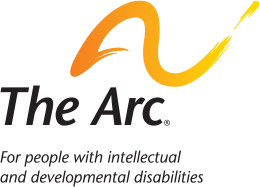Q&A: What’s Going on in Washington, DC, With Medicaid Cuts?
Medicaid is at the center of a major budget debate in Washington, DC. But what does this mean for people who rely on Medicaid? And how will proposed changes, including work requirements and spending cuts, impact health care for people with disabilities, seniors, and low-income families?
In this Q&A, we break down what’s happening, what’s at stake, and what comes next.
Q: Didn’t the President say he does not want cuts to Medicaid?
A: Yes, the President has stated on several occasions that he opposes cuts to Medicaid. Many members of Congress also state opposition to cutting Medicaid. However, the budget resolution that passed the House on February 25, 2025, which the President also said he supports, lays the groundwork for over $880 billion in cuts to Medicaid and other low-income programs over the next 10 years. Think of it as the first inning in a long baseball game.
Watch our video for a plain language explanation.
Q: Some members of Congress say Medicaid is not mentioned in the House bill.
A: Correct. Medicaid is not mentioned in the budget resolution. However, the bill directs a specific committee—the House Energy and Commerce Committee—to find $880 billion in “savings” (over 10 years).
There is no way to achieve such “savings” or cuts without directly impacting Medicaid health care and critical services for people with disabilities, seniors, and low-income families. On March 5, the non-partisan Congressional Budget Office (CBO) published a letter detailing what programs could be cut to meet the $880 billion target.
The CBO letter confirms early expectations, finding that nearly all of the cuts could only come from Medicaid and the Children’s Health Insurance Program.
Q: Some members of Congress say they are only targeting “waste, fraud, and abuse” in Medicaid. Is that true?
A: Everyone wants to eliminate waste, fraud, and abuse. Members of Congress are saying their goal is to get rid of waste, fraud, and abuse and that all the cuts can be financed by stopping waste, fraud, and abuse. We are skeptical.
Currently, the federal government and state governments have programs in place to prevent and detect waste, fraud, and abuse. In 2023, the Department of Health and Human Services recovered $1.8 billion in fraud. These efforts are essential, but in no way are significant to support $880 billion in cuts over 10 years. Moreover, the only way to get to this magnitude of cuts is to cut health care and services that people with disabilities, children, and adults rely on. People will be hurt by these deep cuts.
Q: Will work requirements impact people with disabilities on Medicaid?
A: Yes, despite claims that beneficiaries with disabilities won’t be affected by work requirements for Medicaid, research shows that work requirements don’t work—they don’t lead to higher employment rates and cause people to lose access to health care. These requirements, including increased paperwork, doctor’s signoffs, and other bureaucratic burdens, disproportionately impact people with disabilities who may face barriers to employment. They create real administrative waste. They achieve savings in the Medicaid program by reducing the number of people eligible for Medicaid, but they may raise states’ costs in administering the new requirements.
Watch our short video on work requirements.
Q: Some members of Congress say they want to restore the Medicaid program to its “original purpose.”
A: This refers to the people who were eligible before the Medicaid expansion (enacted in 2010), which created a new eligibility category for low-income adults to qualify for coverage. This expansion is especially beneficial for adults who might not qualify under traditional disability categories because their disability may not qualify them for coverage, or they may have slightly higher income.
Q. What are the next steps in this process, and when can we expect them to happen?
A: The next step is for the Senate to take up the House-passed budget as soon as April. Once the House and Senate can agree on a unified budget resolution, the House Energy and Commerce and Senate Finance committees will make changes to programs to come in line with the budget targets. During this step we will see the proposed changes in the law that will result in the savings required by the Budget Resolution. The House and Senate will then have to pass the final reconciliation bills and be signed by the President.
Q: How is The Arc responding to these proposed cuts?
A: The Arc is committed to advocating for people with disabilities by highlighting the consequences of these policies. We are actively engaging with Congress and the Administration to protect Medicaid so that health care and disability services are not taken away.
Watch our CEO, Katy Neas, on CNN discussing Medicaid cuts.
For more information about the impact of cuts on states, see the following resources:
- The Arc’s Medicaid state profiles
- KFF state fact sheets
- Enrollment data by state
- A letter from state legislators
Ready to take action?
Send a message to Congress now and tell them to protect Medicaid for people with disabilities and their families!








